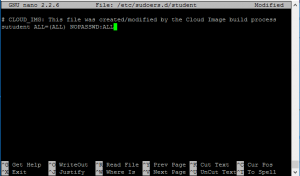This class to represent how classy someone
or something is.”Classy” is interchangable with “fancy”.
If you add fancy-looking items, you will increase
your “classiness”.
class Classy(object):
def __init__(self):
self.items = []
def addItem(self, item):
self.items.append(item)
def getclassiness(self):
classiness = 0
if len(self.items) > 0:
for item in self.items:
if item == "tophat":
classiness += 2
elif item == "bowtie":
classiness += 4
elif item == "monocle":
classiness += 5
return classiness
notation: expression
():parenthesis
“””input manatees: a list of “manatees”, where one manatee is represented by a dictionary
a single manatee has properties like “name”, “age”, et cetera
n = the number of elements in “manatees”
m = the number of properties per “manatee” (i.e. the number of keys in a manatee dictionary)”””
def example1(manatees):
for manatee in manatees:
print manatee[‘name’]
def example2(manatees):
print manatees[0][‘name’]
print manatees[0][‘age’]
def example3(manatees):
for manatee in manatees:
for manatee_property in manatee:
print manatee_property, “: “, manatee[manatee_property]
def example4(manatees):
oldest_manatee = “No manatees here!”
for manatee1 in manatees:
for manatee2 in manatees:
if manatee1[‘age’] < manatee2['age']:
oldest_manatee = manatee2['name']
else:
oldest_manatee = manatee1['name']
print oldest_manatee
class Element(object):
def __init__(self, value):
self.value = value
self.next = None
class LinkedList(object):
def __init__(self, head=None):
self.head = head
def append(self, new_element):
current = self.head
if self.head:
while current.next:
current = current.next
current.next = new_element
else:
self.head = new_element
def get_position(self, position):
counter = 1
current = self.head
if position < 1:
return None
while current and counter <= position:
if counter == position:
return current
current = current.next
counter += 1
return None
def insert(self, new_element, position):
counter = 1
current = self.head
if position > 1:
while current and counter < position:
if counter == position -1:
new_element.next = current.next
current.next = new_element
current = current.next
counter += 1
elif position == 1:
new_element.next = self.head
self.head = new_element
def delete(self, value):
current = self.head
previous = None
while current.value != value and current.next:
previous = current
current = current.next
if current.value == value:
if previous:
previous.next = current.next
else:
self.head = current.next


